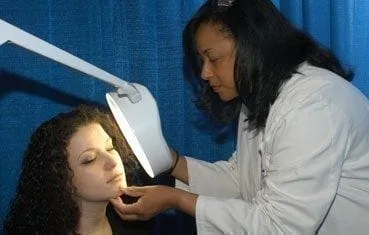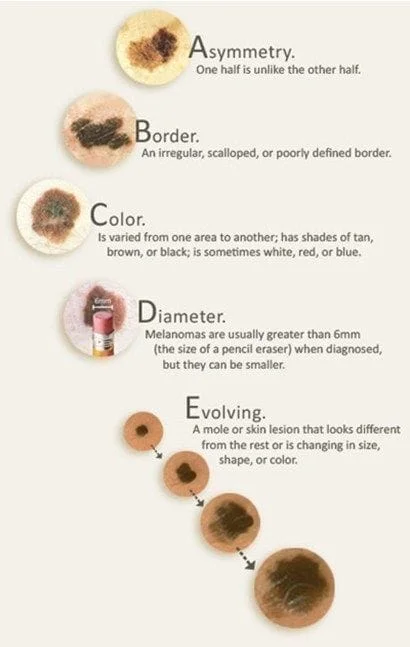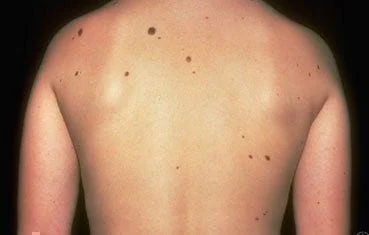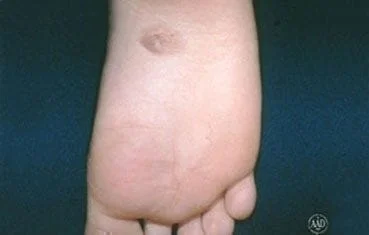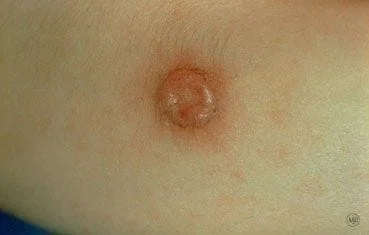Moles In Basking Ridge, Union, Morristown, & Parlin, NJ
Moles: Overview
Also called nevi
Moles are common. Almost every adult has a few moles. Adults who have light skin often have more moles. They may have 10 to 40 moles on their skin. This is normal.
You should not be overly worried about your moles. But you should know:
- A type of skin cancer, melanoma, can grow in or near a mole.
- Caught early and treated, melanoma can be cured.
- The first sign of melanoma is often a change to a mole — or a new mole on your skin.
- Checking your skin can help you find melanoma early. A dermatologist can show you how to examine your skin and tell you how often you should check your skin.
Moles in children: What parents should know
Moles on a young child’s skin are generally nothing to worry about. It is normal for new moles to appear during childhood and adolescence. Moles will grow as the child grows. Some moles will darken, and others will lighten. These changes are expected in children and seldom a sign of melanoma — a type of skin cancer that can begin in a mole.
Image property of the American Academy of Dermatology.
Moles: Signs & Symptoms
People often want to know how they can tell a mole from a melanoma. Here is a general rule.
Mole
A mole on your body has these traits:
- 1 color - Often brown, but a mole can be tan, black, red, pink, blue, skin-toned, or colorless.
- Round in shape.
- Flat or slightly raised.
- Looks the same from month to month.
Your moles may not look alike. Even in the same person, moles can differ in size, shape, or color. Moles can have hair. Some moles will change slowly over time, possibly even disappearing.
Moles can appear anywhere on the skin. Moles develop on the scalp, between the fingers and toes, on the soles and palms, and even under the nails.
Melanoma
If you see a mole or new spot on your skin that has any of the ABCDEs of melanoma, see a dermatologist immediately.
Image property of the American Academy of Dermatology.
Moles: Different Types
Almost every adult has a few moles. Most adults have a type of mole called a common mole.
There are other types of moles. Some types increase a person’s risk for getting melanoma, a type of skin cancer. These moles are described below.
- 4 or more atypical moles.
- Already had a melanoma.
- A first-degree relative (parent, brother, sister, or child ) who had melanoma.
Your dermatologist may call an atypical mole a dysplastic (dis-plas-tic) nevus. Atypical moles are often:
- Larger than an eraser on the end of a pencil.
- Have an odd shape (not round).
- Show more than 1 color — mixes of tan, brown, red, and pink.
Atypical moles can appear anywhere on the body. They often appear on the
trunk. And they may appear on the scalp, head, and neck. Atypical moles
rarely appear on the face.
Some people who have many atypical
moles have a medical condition called familial atypical multiple
mole-melanoma (FAMMM) syndrome. People with FAMMM syndrome have:
- Many moles — more than 50.
- Some moles that are atypical.
- A blood relative who has (or had) melanoma.
Nevus is the medical term for mole. When your dermatologist is talking about 2 or more moles, your dermatologist may say nevi.
Your dermatologist may call your mole a nevus.
Spitz nevus
This mole often looks like melanoma. It can so closely resemble melanoma that a dermatologist cannot tell by looking at it. That’s because this mole is often is pink, raised, and dome-shaped. It also can have different colors in it such as red, black, and brown. The mole may bleed. It can have an opening that oozes.
Acquired mole (50 to 100 or more)
When a mole appears on the skin after a person is born, it is called an acquired mole. Most people who have light skin have about 10 to 40 of these moles. These moles also are called common moles.
If a person has 50 or more of these moles, the person has a higher risk for getting melanoma.
Images used with permission of the American Academy of Dermatology National Library of Dermatologic Teaching Slides.
Moles: Diagnosis and Treatment
How do dermatologists tell whether a spot is a mole?
A dermatologist’s trained eye can often tell whether a spot is a mole.
How do dermatologists treat moles?
Most moles do not require treatment. A dermatologist will remove a mole that:
- Bothers a patient (rubs against clothing, etc.).
- A patient finds unattractive.
- Could be skin cancer.
A dermatologist can remove a mole during an office visit. A few moles will require a second visit. Whether it's during 1 or 2 visits, a dermatologist can safely and easily remove a mole. A dermatologist will use 1 of these procedures:
- Surgical excision : The dermatologist cuts out the entire mole and stitches the skin closed. If the dermatologist suspects that the mole contains cancer, the dermatologist will send the mole to a lab. It will be examined under a microscope. This is called a biopsy.
- Surgical shave : The dermatologist uses a surgical blade to remove the mole.
Never try to shave off a mole at home.
Here’s why you should never try to shave off a mole at home:
- If the mole contains skin cancer, some of the cancer cells can stay in the skin — and even spread.
- You can disfigure your skin, causing a scar or other permanent reminder.
- You can cause an infection.
Outcome
After a mole is removed, the skin will heal. If the mole grows back, immediately make another appointment to see your dermatologist. This is a sign of melanoma, a type of skin cancer.
Moles: Tips for Managing
Dermatologists recommend the following to their patients:
- If you see a mole on your skin that is changing, itching, or bleeding, make an appointment to see a dermatologist . These are signs of melanoma, a type of skin cancer. Caught early, melanoma can be cured. Without treatment, melanoma can spread. This can be deadly.
- Perform self-exams of your skin . A self-exam can help you catch melanoma early.
- Protect your skin from the sun . It is believed that being out in the sun increases the number of moles on your skin. And we know that the sun causes skin cancer. Tanning beds and sun lamps also cause skin cancer.
An easy way to reduce your risk of getting skin cancer is to skip getting a tan. You also should wear sunscreen every day.
-
If you have 100 or more moles, be sure you have a
dermatologist . If you answer yes to any of the following questions, you also should
have a dermatologist:
- Do you have pigment that covers a large part of your body?
- Do you have familial atypical multiple-mole melanoma (FAMMM) syndrome or a similar medical condition?
- People who have FAMMM should have a full-body screening every 3 to 6 months, beginning at puberty. Your dermatologist may recommend less-frequent screenings if your moles are stable (not changing).
- Join a support group . If you have a higher risk of getting melanoma, joining a support group may help you feel better. You have a higher risk if you have FAMMM, large noticeable moles, or a mole that covers most of the body.
People who have noticeable or unusual moles often have to deal with
stares and whispers. Meeting with people who face similar challenges can
provide emotional support.
Related resources:
- Nevus Outreach Inc. : Support and information for people who have large nevi and neurocutaneous melanocytosis (NCM).
- Nevus Network : Support group for people who have congenital nevi.
© 20222022202120202020 American Academy of Dermatology. All rights reserved. Reproduction or republication strictly prohibited without prior written permission. Use of these materials is subject to the legal notice and terms of use located at https://www.aad.org/about/legal

